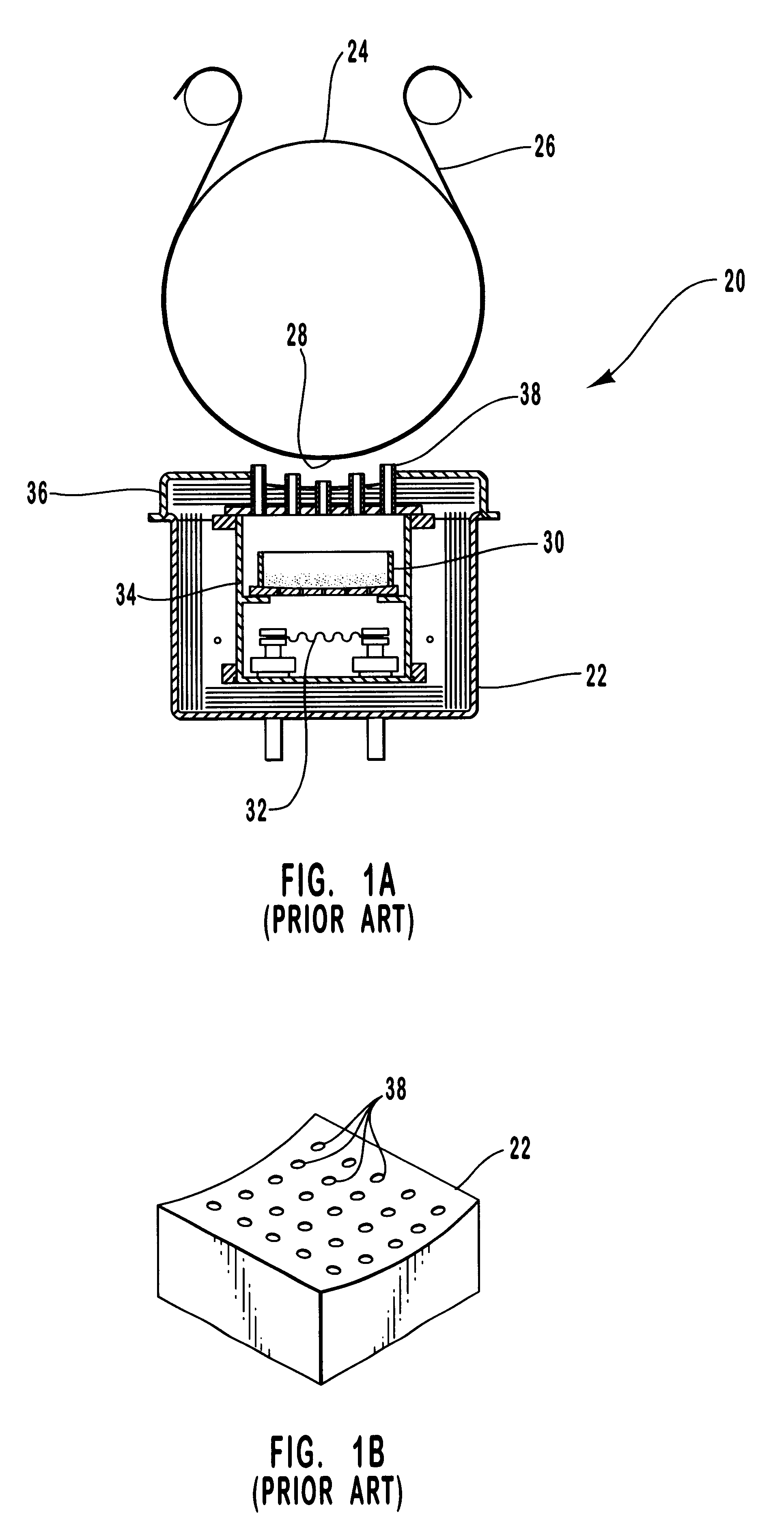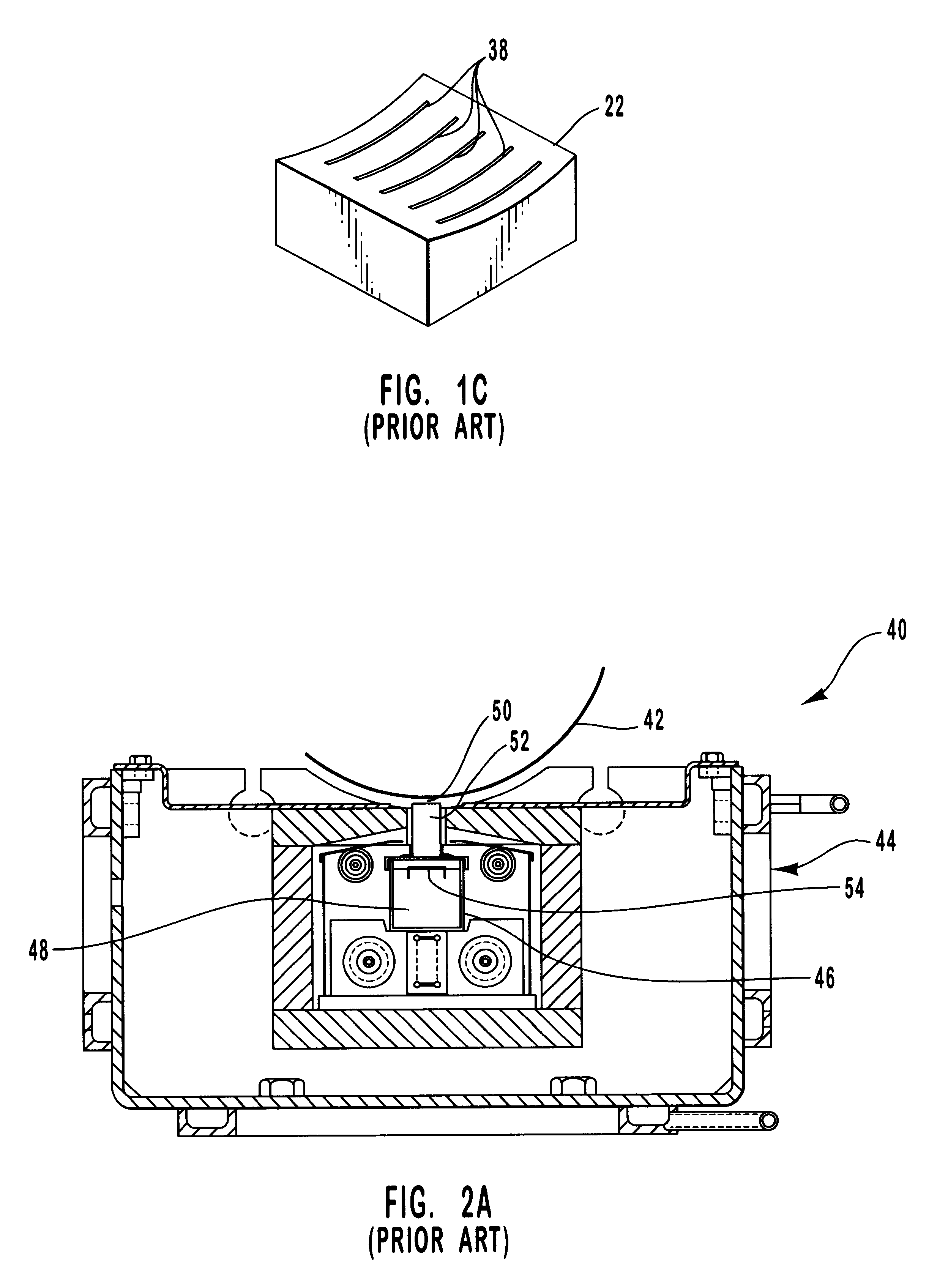Linear aperture deposition apparatus and coating process
a technology of deposition apparatus and coating process, which is applied in the direction of instruments, optical elements, transportation and packaging, etc., can solve the problems of high capital cost of vacuum coating equipment, limited economic production of these coatings, and inability to meet the requirements of large-scale commercial applications. the effect of high throughput of coated area
- Summary
- Abstract
- Description
- Claims
- Application Information
AI Technical Summary
Benefits of technology
Problems solved by technology
Method used
Image
Examples
Embodiment Construction
In this example, a floating baffle and flow restricting baffle were utilized as shown in the embodiment of FIG. 3C. The crucible was formed from a rectangular box having dimensions 2.times.2.times.9.5 in. The dimensions of the other source components were:
The flow restricting baffle contained five rows of 3-mm holes to prevent ZnS particulate from being ejected from the source material. The substrate was polyester film having a thickness of 0.002 in. The polyester had been aluminized to facilitate coating thickness measurements. There was no shutter between the source and the substrate, nor was there any masking.
Base pressure was 5.times.10.sup.-5 Torr. The stability and source uniformity were evaluated at two conditions, denoted "A" and "B". In condition A, 1.4 kW of power was applied to the source, and the web transport speed was 0.5 m / min. In condition B, the power was increased by a factor of 1.66 (a 66% increase in power) to 2.33 kW. The web speed was increased to 3 m / min, to a...
PUM
| Property | Measurement | Unit |
|---|---|---|
| Length | aaaaa | aaaaa |
| Flow rate | aaaaa | aaaaa |
| Length | aaaaa | aaaaa |
Abstract
Description
Claims
Application Information
 Login to View More
Login to View More - R&D
- Intellectual Property
- Life Sciences
- Materials
- Tech Scout
- Unparalleled Data Quality
- Higher Quality Content
- 60% Fewer Hallucinations
Browse by: Latest US Patents, China's latest patents, Technical Efficacy Thesaurus, Application Domain, Technology Topic, Popular Technical Reports.
© 2025 PatSnap. All rights reserved.Legal|Privacy policy|Modern Slavery Act Transparency Statement|Sitemap|About US| Contact US: help@patsnap.com



